Struggling to eat enough protein every day? Whether you’re looking to build muscle, stay full longer, or simply improve your nutrition, adding more protein to your diet is easier than you think!
Small changes, like including a high-protein food with every meal, can make a big difference. Starting your day with protein-packed breakfasts, choosing high-protein snacks, and incorporating protein-rich drinks can help you stay energized and satisfied.
In this article, we’ll explore 12 simple ways to boost your protein intake.
Let’s start and discover how you can easily add more protein to your diet today!
- 1. Include a High-Protein Food with Every Meal
- 2. Eat More Protein at Breakfast
- 3. Choose High-Protein Snacks
- 4. Eat More Protein at Lunch
- 5. Add More Protein to Your Dinners
- 6. Drink More Protein-Rich Beverages
- 7. Eat Protein Before and After Workouts
- 8. Cook with High-Protein Ingredients
- 9. Choose Protein-Rich Dairy Products
- 10. Eat Cheese, Lean Jerky and Canned Fish For More Protein
- 11. Eat More Plant-Based Protein Foods
- 12. Plan Your Meals to Get More Protein
- How to Eat More Protein: A Recap
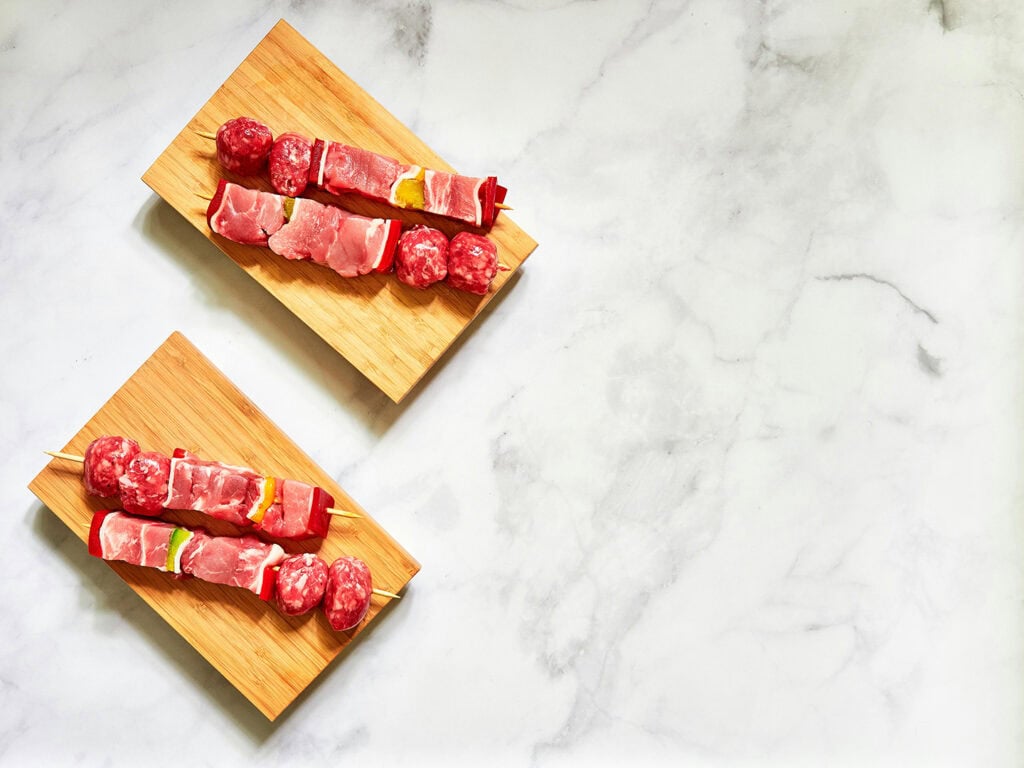
1. Include a High-Protein Food with Every Meal
Getting enough protein at each meal is important. Researchers recommend consuming 30–40g of protein per meal to promote fullness, wellness and preserve muscle mass. By including high-protein foods in your meals, you can maintain energy levels and support muscle growth.
Choose lean meats, dairy, eggs, and plant-based proteins to ensure a balanced intake of essential nutrients.
Examples of high-protein foods:
- Chicken breast (31g per 100g)
- Salmon (25g per 100g)
- Eggs (6g per large egg)
- Tofu (10g per 100g)
- Cottage cheese (23g per cup)
- Lentils (9g per 100g)
See also Meat and Fruit Diet
2. Eat More Protein at Breakfast
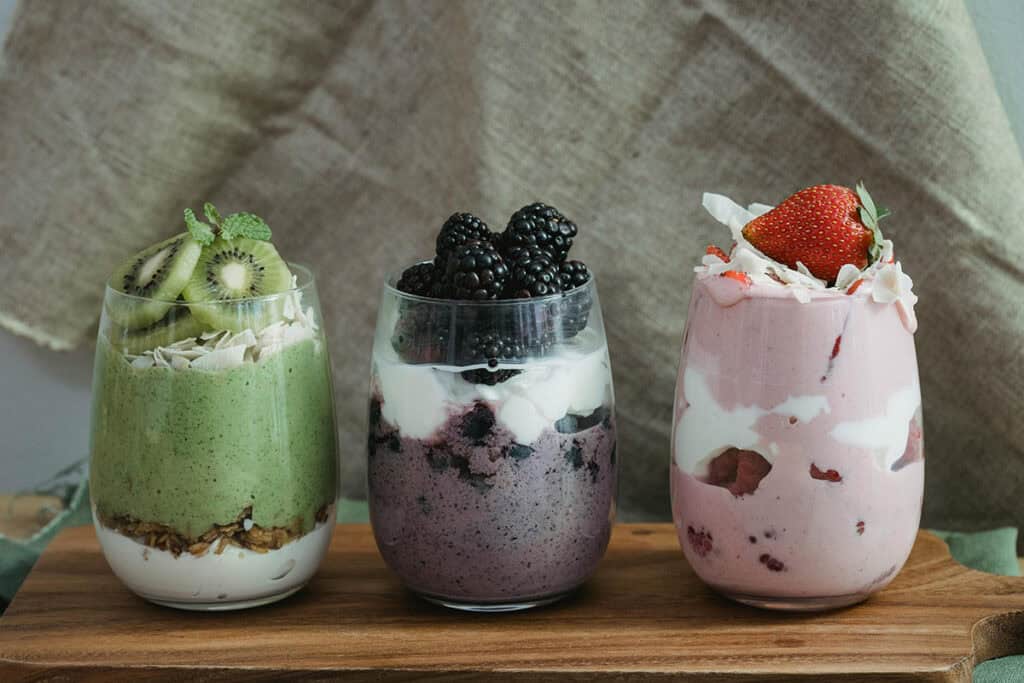
Breakfast is the most important meal of the day. Adding protein in the morning keeps you energized and reduces cravings later. Foods like Greek yogurt, eggs, and cottage cheese provide a strong protein foundation.
Including protein at breakfast stabilizes blood sugar levels, preventing mid-morning energy crashes and reducing the likelihood of overeating throughout the day.
Examples of high-protein breakfast foods:
- Greek yogurt (20g per cup)
- Cottage cheese (23g per cup)
- Scrambled eggs (12g per two eggs)
- Peanut butter (8g per 2 tbsp)
- Protein smoothie with whey (25g per serving)
3. Choose High-Protein Snacks
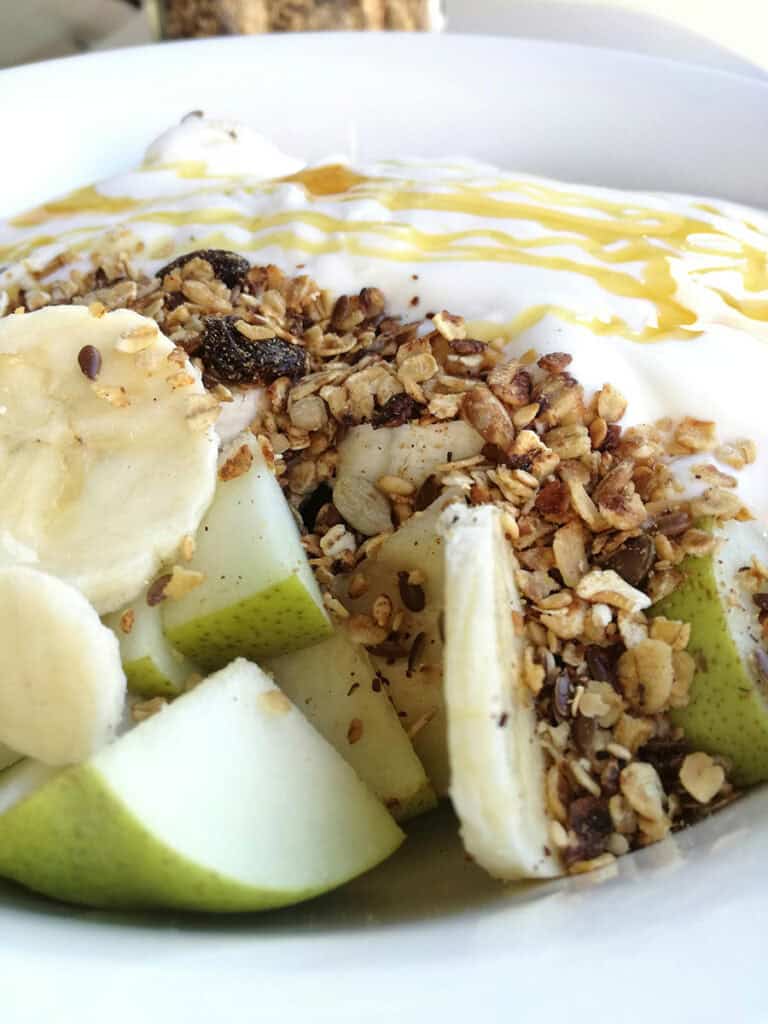
Snacking can be a great way to add extra protein to your diet. What are healthy snacks? Instead of reaching for chips or sweets, choose protein-rich options.
High-protein snacks support muscle repair, curb hunger, and provide sustained energy. They are ideal for keeping metabolism active between meals and can help in muscle recovery after workouts.
Examples of high-protein snacks:
- Hard-boiled eggs (6g per egg)
- Cheese slices (7g per slice)
- Almonds (6g per 28g serving)
- Roasted chickpeas (7g per half cup)
- Protein bars (10–20g per bar)
4. Eat More Protein at Lunch

A protein-rich lunch helps maintain energy levels throughout the day. Including high-protein foods ensures a balanced meal that promotes muscle health and sustains fullness. Grilled chicken, fish, beans, and cottage cheese are great options to incorporate into a healthy lunch routine.
Examples of high-protein lunch foods:
- Grilled chicken (31g per 100g)
- Tuna salad (20g per serving)
- Lentil soup (18g per bowl)
- Quinoa salad with beans (12g per cup)
- Turkey sandwich (25g per sandwich)
5. Add More Protein to Your Dinners
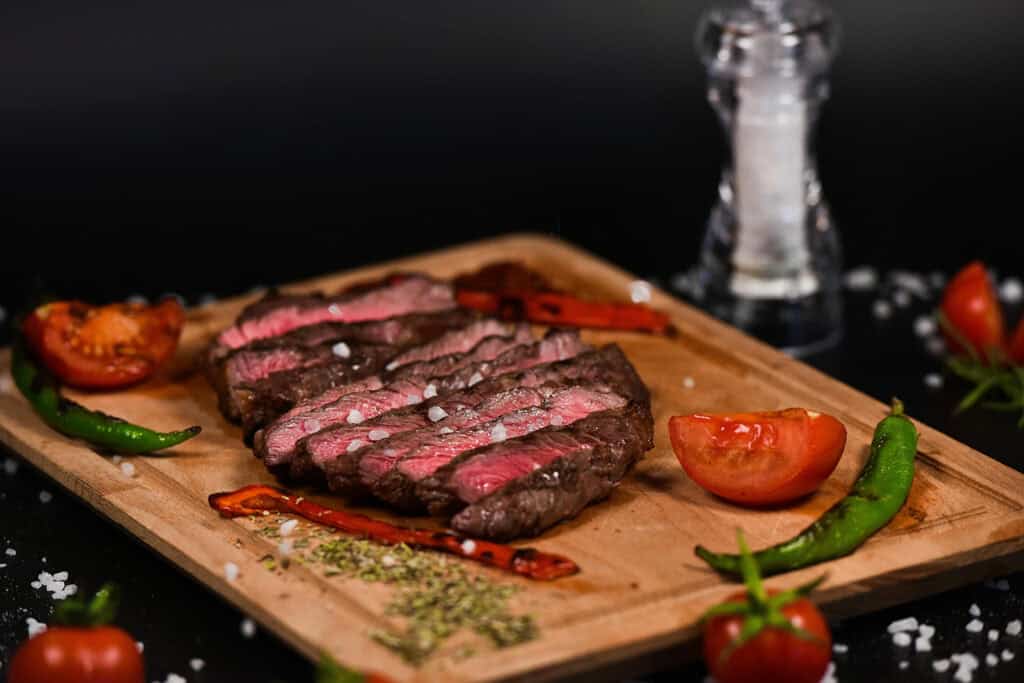
Dinner should include high-quality protein to support muscle recovery. Lean meats, fish, and plant-based options can boost protein intake. Consuming adequate protein in the evening helps repair tissues overnight and keeps metabolism steady, ensuring muscle maintenance and overall wellness.
Examples of high-protein dinner foods:
- Lean beef (26g per 100g)
- Salmon (25g per 100g)
- Tempeh stir-fry (19g per 100g)
- Black bean chili (15g per bowl)
- Cottage cheese with veggies (23g per cup)
See also Diet Green Tea
6. Drink More Protein-Rich Beverages
Drinks can be an easy way to increase protein intake. Protein shakes and dairy-based drinks are convenient and effective. These beverages are great for those who have trouble consuming enough protein through solid foods alone and can be easily incorporated into busy lifestyles.
Examples of high-protein drinks:
- Whey protein shake (25g per serving)
- Milk (8g per cup)
- Soy milk (7g per cup)
- Greek yogurt smoothie (20g per serving)
- Protein coffee (10g per cup)
7. Eat Protein Before and After Workouts

Exercise increases protein needs. Eating protein-rich foods before and after workouts supports muscle repair and growth. Pre-workout protein provides energy, while post-workout protein aids in muscle recovery, making it essential for fitness enthusiasts and athletes.
Examples of pre- and post-workout protein foods:
- Protein shake (25g per serving)
- Chicken and rice (35g per meal)
- Hard-boiled eggs (6g per egg)
- Nuts and seeds (6–8g per serving)
- Cottage cheese before bed (23g per cup)
8. Cook with High-Protein Ingredients
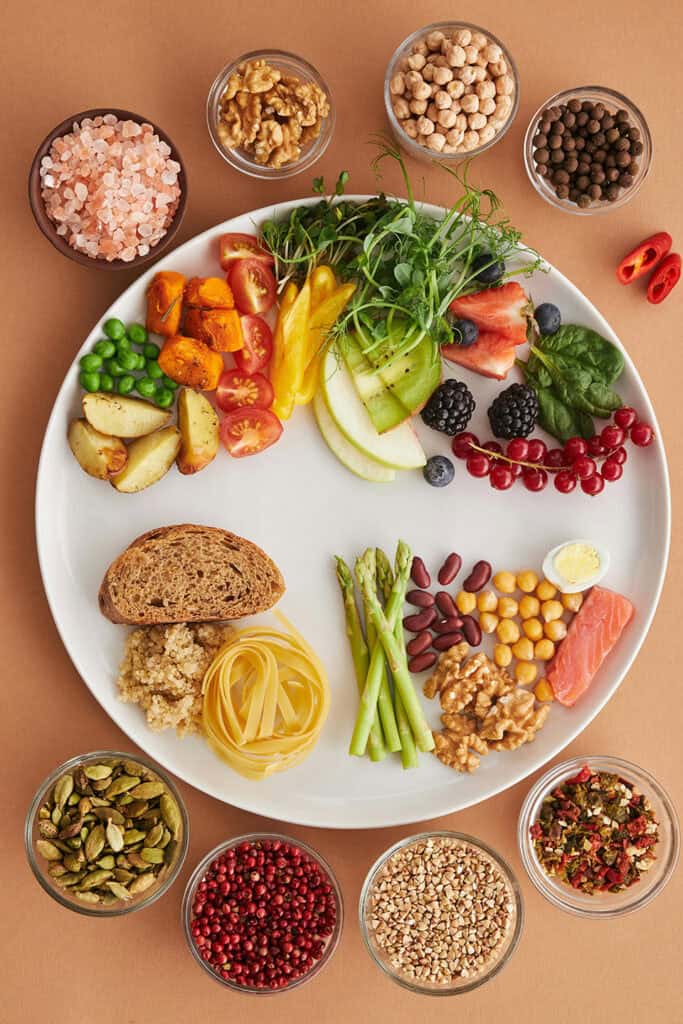
Cooking at home allows better control of protein intake. Adding eggs, beans, and dairy-based ingredients can boost protein levels. Swapping regular ingredients for high-protein alternatives helps enhance your meals without major dietary changes.
Examples of high-protein cooking ingredients:
- Eggs in pancakes (12g per two eggs)
- Lentils in soups (9g per 100g)
- Greek yogurt in sauces (20g per cup)
- Chia seeds in oatmeal (5g per 2 tbsp)
- Quinoa instead of rice (8g per cup cooked)
9. Choose Protein-Rich Dairy Products
Dairy is an excellent source of protein, offering a variety of high-protein options. These foods provide calcium and other essential nutrients while helping you meet your daily protein intake requirements.
Examples of high-protein dairy products:
- Greek yogurt (20g per cup)
- Cottage cheese (23g per cup)
- Cheddar cheese (7g per slice)
- Ricotta cheese (14g per half cup)
- Skim milk (8g per cup)
10. Eat Cheese, Lean Jerky and Canned Fish For More Protein
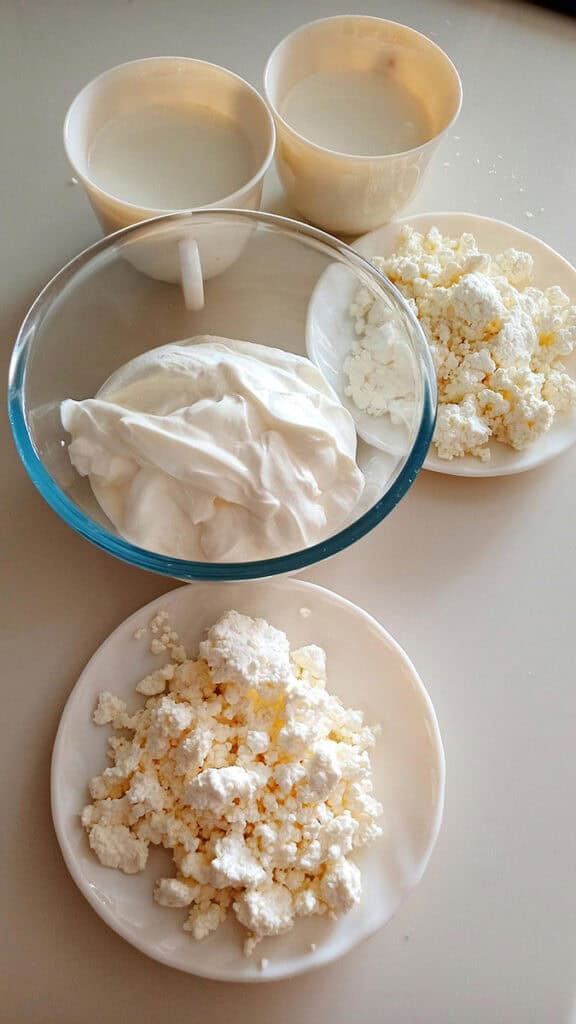
Including high-protein foods in your diet is essential for maintaining muscle mass and overall health. Cheese, lean jerky, and canned fish are excellent protein sources that provide essential amino acids, the building blocks of muscle. These options offer good nutritional value while helping meet your daily protein needs.
- Cheese: A great complete protein source, cheese provides around 7 grams of protein per ounce. While high in saturated fat, it also contains important nutrients like calcium. Opt for low-fat varieties for a healthier choice.
- Lean Jerky: A convenient lean meat option, jerky is high in protein, offering 9–12 grams of protein per ounce. Choose low sodium intake varieties to avoid excess salt.
- Canned Fish: Fatty fish like tuna or salmon contain 20–25 grams of protein per serving. They are rich in dietary protein and healthy fats but lower in processed meat concerns.
Incorporating these protein content-rich foods into your diet helps maintain body weight and supports muscle growth.
11. Eat More Plant-Based Protein Foods
Plant-based proteins can be just as effective as animal proteins in a balanced and good diet plan. These foods are great for vegetarians and vegans, providing essential amino acids and fiber while supporting overall health.
Examples of plant-based high-protein foods:
- Lentils (9g per 100g)
- Tofu (10g per 100g)
- Chickpeas (7g per half cup)
- Edamame (11g per cup)
- Hemp seeds (9g per 3 tbsp)
12. Plan Your Meals to Get More Protein

Planning meals ensures you get enough protein daily. Preparing protein-rich snacks and meals in advance helps maintain a balanced diet and prevents nutrient deficiencies. Having protein sources ready makes it easier to stick to healthy eating habits.
Examples of meal planning for protein:
- Cook extra chicken for quick meals (31g per 100g)
- Make protein-rich bowls (chicken, quinoa, veggies)
- Keep boiled eggs ready (6g per egg)
- Prep protein shakes for busy days (25g per shake)
- Stock up on Greek yogurt (20g per cup)
See also What Is the Most Effective Diet to Lose Weight?
How to Eat More Protein: A Recap
Eating enough protein is essential for muscle mass, weight loss, and overall health. Different protein sources provide essential amino acids, which the body needs to function properly. Healthy adults should aim for more than enough protein based on their activity levels.
The recommended intake is about 0.8 grams of protein per kilogram of body weight, but high protein diets like the carnivore diet or chicken and rice diet may require more.
Plant-based options, such as baked beans, sunflower seeds, nuts and seeds, and nut butter, support a vegan diet while offering high protein content. For convenience, protein powders help store protein easily.
A balanced approach ensures you meet your daily protein needs without excess saturated fat, helping you lose weight effectively.


